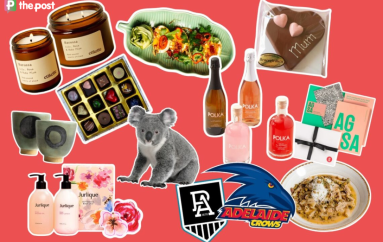How Brands Grow: the book that changed marketing
The South Australian book that helped change the world’s marketing mindset to be more analytical is still as relevant today as it was when launched a decade ago.

Written by Professor Byron Sharp, the Director of the University of South Australia’s Ehrenberg-Bass Institute, How Brands Grow: what marketers don’t know pioneered the transformation of marketing from an art to a science.
The book was the first of its kind to present scientific laws and what these laws mean for marketing strategy and business, as well as dismissing marketing’s “cultural cringe”.
“Science has transformed every discipline it’s touched, and it’s doing the same for marketing,” says Professor Sharp.
“Science is simply the systematic study of the real world, and buying and selling is certainly a big part of the real world.
“A lot more people now are comfortable that marketing is still a creative discipline and that a better scientific understanding of the way the world works doesn’t threaten that.”
Professor Sharp and his team at the Ehrenberg-Bass Institute, the world’s largest centre for research in marketing, demolished accepted beliefs to reveal that price promotions fail to attract buyers, any brand’s loyal buyers also buy rival brands, and loyalty programs fail to boost brand loyalty.
There was a substantial gap in the marketing knowledge of industry professionals says Prof Sharp, so CMOs needed a book that could explain to CEOs and CFOs why big changes were being made in the marketing department.
“The sub-title of the book was deliberately provocative; what marketers don’t know, but also truthful,” says Professor Sharp.
“These scientific laws, their discovery and implications weren’t being taught in universities, most marketers, even academics were ignorant of some of the most important findings in marketing.
“The book isn’t about any particular advertising media nor distribution channels
“It is about the fundamentals of how consumers buy and how brands compete… these things have not changed.”

Prof Sharp said one of the law-like patterns revealed in How Brands Grow is an example found in shopper behaviour.
According to his findings, the majority of supermarket shopping trips are to buy fewer than five items; a discovery that has important implications for the design of supermarkets.
This ratio of small to large baskets occurs all around the world, and recent data on Australian shoppers showed it stayed true even during the height of coronavirus-induced panic buying.
“Creative marketing strategy is far more likely to work when it’s based on a view of how the world really is, rather than theory or guesses,” he said.
“Scientific laws have given marketers a new confidence and understanding.
Prof Sharp believes that, even with the COVID-19 induced recession, the next 10 years will see the world’s wealth continue to grow, especially in poorer countries.
“One of the biggest trends in marketing that will not stop is that the world is getting wealthier,” Prof Sharp said.
“In Australia, we see this in the success of premium beer, wine, chocolate, wealth management services, and so on. The world is getting older, better educated, more technology and these trends will continue for a long time.”
How Brands Grow has been translated into more than a dozen languages and Prof Sharp has also published How Brands Grow Part 2 with Prof Jenni Romaniuk in 2015, as well as the Marketing: Theory, Evidence, Practice textbook which reflects modern knowledge about marketing and evidence-based thinking.




